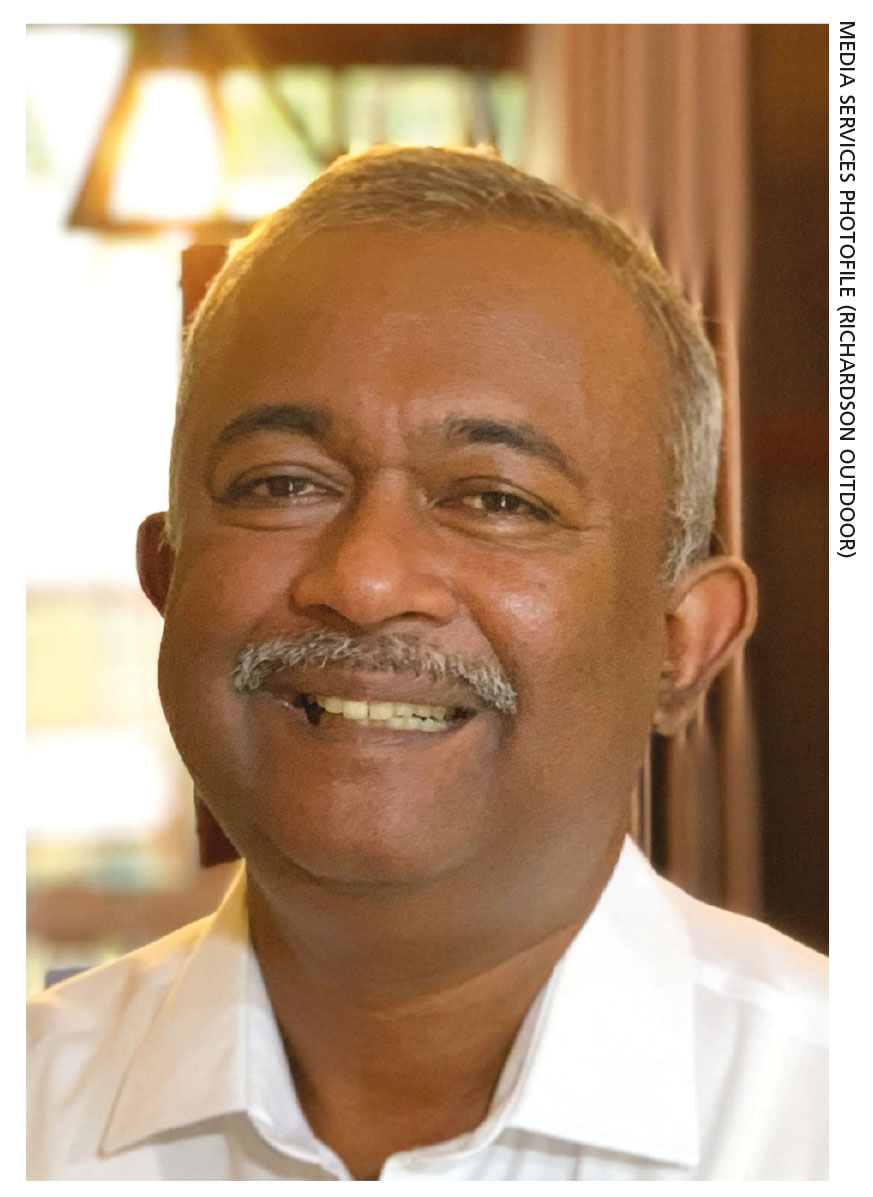AD INDUSTRY
Compiled by Savithri Rodrigo
SAVVY MEDIA MULTIPLIER
Freddy Arumugam discusses the potential of the out-of-home ad industry
Q: What does the out-of-home (OOH) advertising industry look like in these times?
A: Activity is gradually recovering within the confines of the ‘new normal.’ It is time therefore, to rebuild trust with consumers. Brands must be present in this new landscape and take advantage of the opportunity for renewed reconnection with their stakeholders.
Social and cultural renewal is critically important as OOH advertising is particularly well placed. Omnipresent media is certainly one of the most effective ways of reaching audiences outside their homes by using proximity, flexibility and creativity.
Q: How is the industry viewed by corporates in the present context?
A: Smarter companies are investing in OOH to ensure industry leadership; and smart companies are investing in OOH.
In Colombo, a top telco’s dominating presence is seen on gantries, billboards and street name boards. Naturally, the company has leading market share. The opportunities are endless.
Q: And how does OOH advertising build, develop and sustain brands?
A: It’s about the fastest connection of brands to potential consumers. OOH enables bold graphics in the heart of the city with timely access to stores. Brands understand each step taken by customers in purchasing, as well as the need for retailers to focus on both context and conversation driven marketing to better engage with consumers, driving them into stores.
The social media multiplier effect can also be driven by OOH, adding exciting promotions that can help sustain brands.
Q: Is the OOH ad industry a support truss to mainstream media advertising?
A: There is a misconception that OOH media isn’t mainstream. However, it is classified as above the line media. The launch of the world’s most comprehensive study into the power of relevancy in OOH has revealed that digital out-of-home (DOOH) campaigns using contextually relevant messaging achieve an average of 17 percent more effective audience response.
The Moments of Truth, a research study, used a combination of techniques dubbed ‘research to reality’ – the most wide-ranging application of neuroscience in DOOH ever undertaken – to measure brain response, eye tracking research to measure ad recall, and test and control sales uplift studies to understand how dynamic DOOH drives direct sales response.
OOH has the unique quality of being a leader that leads to other media multipliers.
Q: What strengths does OOH advertising possess in the context of communications?
A: OOH is present at commute locations, residential clusters and commercial complexes, a potency that primes consumers in the shopping environment. It is undeniable that consumer interest in and around products and services will vary. Choices on commutes, food, travel, shopping and healthcare will shift dramatically.
Q: Could you cite examples of successful OOH branding?
A: Following the first wave of the pandemic, a prominent insurance firm launched a campaign using bus shelters and billboards to remind people to redirect for more information.
Location is key and must be selected on the basis of traffic flow, which determines dwell time and road position. The campaign stands out with its short headline and powerful picture on an orange background.
Q: What are the challenges and opportunities in the industry?
A: OOH is growing especially in the digital realm and regulation is important. Different standards for different vendors are unacceptable. Besides poorly maintained cheap structures, authorities must revisit franchises because in most local authorities, there is no regulation for modern-day OOH vendors.
In the meantime, OOH firms must invest in ensuring that out-of-home is both appealing and safe. Measured progress is observed in investments made in quality LED screens and technology, which supports the requirements of clients and agencies.
Q: So what role do you envisage the industry will play in the future?
A: The LED gantries and quality of screens around the city centre reflect the quality of properties in Colombo becoming more sophisticated. These have been sourced from top brands in the world market.
For example, the Bandaranaike International Airport (BIA) has witnessed substantial investments in sophisticated display properties in tandem with the development of the airport interiors to international standards.
Responsible OOH leaders will ensure environmental responsibility. The industry will become more organised, infusing metrics that will help determine the efficiency of OOH and DOOH properties. Following global trends, DOOH will proliferate in the OOH market.







Leave a comment